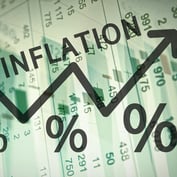What You Need to Know
- Professor Siegel projects inflation will grow much higher than has been projected by the Fed.
- The consumer price index will be 20% higher in 3-4 years, he warns.
- Taxes will rise, but they won't be radically higher, he predicts.
U.S. inflation will grow much higher than has been projected by Federal Reserve Chair Jerome Powell, according to Jeremy Siegel, senior investment strategy advisor at WisdomTree and professor of finance at the Wharton School of the University of Pennsylvania.
However, “I’m not predicting runaway inflation, nor am I predicting the type of double-digit inflation” that was seen in the 1970s and early 1980s, he said Thursday on a webinar.
The Fed’s Take
Inflation grew in recent months, and the 12-month change in personal consumption expenditures was 3.6% in April and will probably remain elevated over the coming months before moderating, Powell said Wednesday at a news conference.
Part of the increase reflected low readings from early in the pandemic falling out of the calculation and the “pass-through of past increases” in oil prices to consumer energy prices, according to Powell. There’s also been “upward pressure on prices from the rebound in spending as the economy continues to reopen, particularly as supply bottlenecks have limited how quickly production in some sectors can respond in the near term,” Powell said.
Those “bottleneck effects have been larger than anticipated,” but as these “transitory supply effects abate, inflation is expected to drop back toward our longer-run goal, and the median inflation projection falls” from 3.4% this year to 2.1% in 2022 and 2.2% in 2023, Powell said.
Siegel’s Take
“I disagree with that,” Siegel said. “In fact, I disagree quite strongly with that. It is my belief that we are in for a much higher inflation,” caused at least in part by what he sees as excess liquidity caused by the government stimulus programs.
Comparing the pandemic stimulus to the stimulus of the previous financial crisis, he noted that most of the money created by the Fed last time ended up as excess reserves at financial institutions and was not lent to businesses and consumers. This time, however, the money is going directly into the bank accounts of companies and individuals, he pointed out.
Siegel predicts the consumer price index will be 20% higher in three to four years. But “if we keep on increasing money at 12 and a half percent a year, it could be” as much as 30% higher, he warned. That, however, would still be nowhere as high as the 158% increase in the price level between 1970 and 1985, he said.
There is also one potential upside: “Stocks do well in this inflationary environment, especially those that are leveraged for higher prices,” he said.
In the webinar, Siegel provided seven projections in all that he said advisors and investors should take into account for portfolios this year.
7 Implications for Investment Strategies
1. The Fed may let inflation run well above 2%.
For now, Siegel expects the Fed will likely keep the short-term rate near zero but may allow inflation to run well over its 2% targeted forecast before any tightening. Over the next three to four years, the price level could end up rising 20% or more, Siegel predicted.
2. Pressure to clamp down on inflation will emerge.









 June 18, 2021 at 03:21 PM
June 18, 2021 at 03:21 PM








